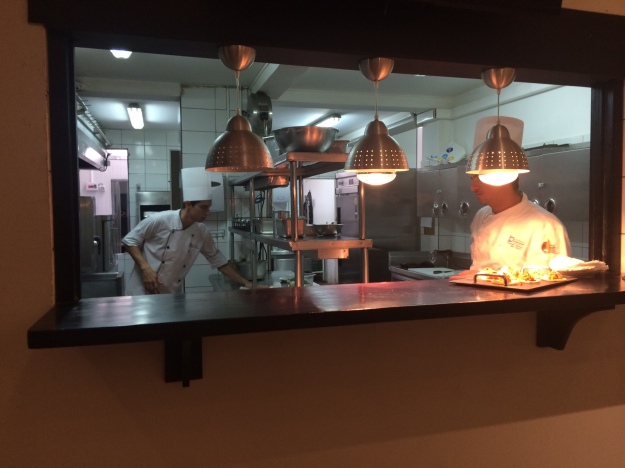 In heading back to San Jose, my group made a stop at the Central Market, which has been a staple in the city’s day-to-day living since 1880. Known more so as Mercado Central, this block-long indoor marketplace can be bustling as a meeting spot as well as for getting lunch or groceries, a cup of coffee or a souvenir.
In heading back to San Jose, my group made a stop at the Central Market, which has been a staple in the city’s day-to-day living since 1880. Known more so as Mercado Central, this block-long indoor marketplace can be bustling as a meeting spot as well as for getting lunch or groceries, a cup of coffee or a souvenir.
Open pretty much from sunup to sundown, Mercado Central contains more than 200 businesses – shops, stalls, and casual restaurants known as sodas – with some that are roughly a century younger than the market itself. As a maze of stands and corner stores, Mercado Central can get a lot of foot traffic. You walk through various alley-like ways and it’s easy to turn your head while you’re moving en route. But of course, you have to make stops in between.
Here is where I did.

Helados De Sorbetera Lolo Mora. Since 1910, this ice cream shop has been serving their recipe for sorbetera. The yellow colored iced treat is whipped but with ingredients like nutmeg, clove, vanilla, and cinnamon.
Café Rey. Owned by the Tapia family, this fifth generation-owned restaurant has had a space in Mercado Central for just over 120 years! One dish to try is the family’s arregladas (stuffed tortillas).
Cafeteria y Cafe Central. This coffee shop is where you can buy any java from black to an espresso or even a sweet specialty drink. Plus watch grinding of, and smell the scent of roasting, Costa Rican coffee beans in large machines. You can also see what is used as a coffee pot in Costa Rica – a chorreador. This device, which is a simple wooden stand, works by pouring hot water into a white cloth that looks like a jean pocket but acts like a filter.
At Mercado Central, you can also find fruits, spices, flour, and cheeses plus even a nice bolso or floral bouquets. It’s definitely worth a visit!


































